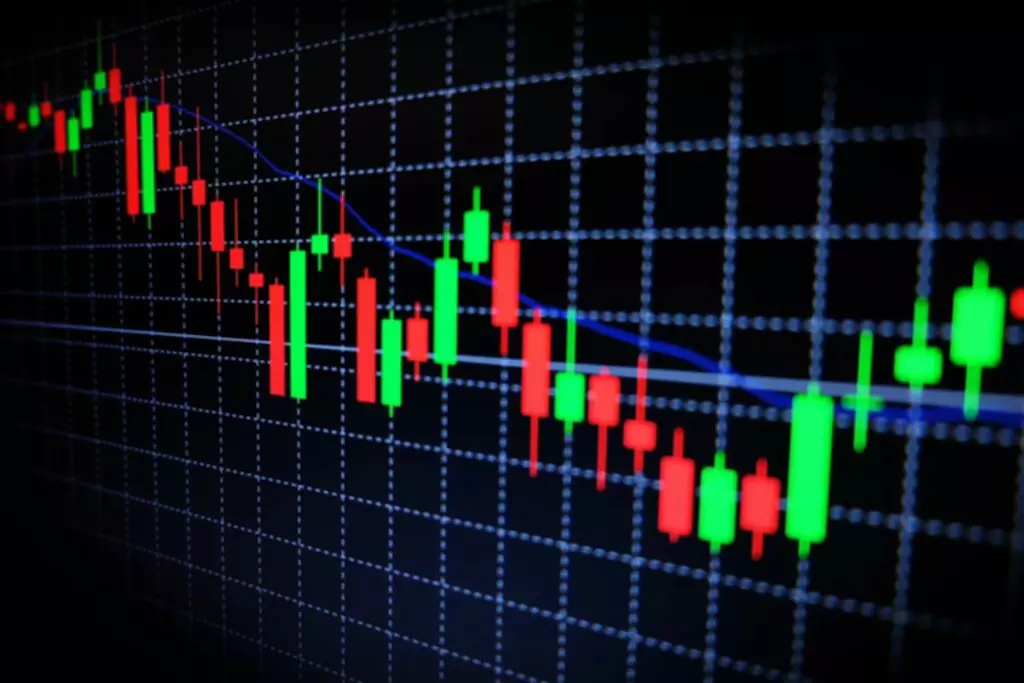Content
Technical analysis, on the other hand, only takes into consideration past price action and other market observables like volume and open interest to forecast future price behavior. Technical analysis and fundamental analysis are the 2 main types of analysis used by stock traders. Fundamental analysis evaluates security to create a forecast for its future price. With technical analysis, traders analyse the historical prices and market statistics of an asset to determine where this asset is going next.
Most investors said the information in the information exchanges accessible by all means of information. The answer does not generate significant value for the ACS variable selection methods on investment analysis. Other possibilities for ACS components question is general information and not specific therefore the investors tend to answer normative. In the case of fundamental analysis, investments are made if the share price is less than the intrinsic value.

With technical analysis, the charts and indicators help to spot patterns which make it easier to recognize the trends. The comparison between the past and present prices allows Fundamental and Technical Analysis the investor to determine which direction the stock is likely to take. Technical investors believe that the determining factors are already reflected in the price of stock.
Qualitative Fundamental Analysis
Check out our guide on how to create an investment strategy, or the best online stock brokers for beginners if you’re just starting to build your portfolio. Chat community lets you ask questions, get trading ideas and more with traders of all experience levels. Each of these tools helps a technical analyst predict market behavior in different ways. When the signals obtained from them align with each other, a technical analyst can use them to trade with greater certainty.
- Success is, however, not just about making good choices but also about avoiding the bad choices and when opportunity presents alternatives, make no mistake the choice you make will help decide the final outcome.
- On the other hand, fundamental analysis focuses on a company’s “fundamentals” in an effort to determine the intrinsic value of its stock shares.
- Generally Bollinger bands contain 80-90% of the price action, which makes a move outside the bands significant.
- Fundamental Analysis vs Technical Analysis in this, the factors scrutinized in the fundamental analysis are financial statements, industry, management processes, and so on.
These two primary analyses are the Qualitative analysis and the Quantitative analysis. Along with this, in Quantitative analysis the financial ratio of a company is analysed. To become a successful investor you must have a good knowledge regarding fundamental analysis. When it comes to how traders approach the markets, fundamental and technical analysis are two of the biggest chapters in the forex industry.
Analysing Financial Statements In Fundamental Analysis
The fundamental analysis places its reliance on all those factors that can influence a stock’s price, such as economic, financial, and other relevant factors. It is based on the thought that though the prices don’t correspond to the effect of fundamentals in the short-term, in the long run, the stock prices will adjust according to the fundamentals. The investment purpose is handled by fundamental analysis, while the trading element is handled by technical analysis. Technical analysis is undertaken by examining price fluctuations and patterns displayed on charts, and fundamental analysis is performed by analysing many economic elements. An analyst might, for example, employ fundamental analysis to uncover an undervalued stock and technical analysis to determine a specific entry and exit point for the investment. Since the data fundamental analysts need to study a stock is generated considerably more gradually than the price and volume data utilized by technical analysts, fundamental analysts use a long-term period.
Accessibility of information does not significantly influence the selection of investment analysis methods. From the data variables contained in equation table, the regression coefficient of TIM amounted to 2,847, and the figures show that every increase in the TIM may also cause an increase in the Fund. So this can be seen from the significant value gained https://xcritical.com/ 0.002 which is the standard of 0.05 which used in this study that means The TIM variable effect on the election method investment analysis. The longer span of time has the higher use of fundamental analysis. Fundamental analysis is useful in identifying undervalued or overprices stocks. This is because it compares the intrinsic value and the market price.
Investing in stocks is a great way to build wealth and save for retirement, especially when you’re younger. Fundamental and technical analysis can help you turn your stock market strategies into actual buy and sell decisions. Technical analysis looks at the movements of stock prices to determine a visible pattern.
Choosing Between Technical And Fundamental Analysis
Investor Junkie does attempt to take a reasonable and good faith approach to maintain objectivity towards providing referrals that are in the best interest of readers. You can trust the integrity of our balanced, independent financial advice. We may, however, receive compensation from the issuers of some products mentioned in this article. Opinions are the author’s alone, and this content has not been provided by, reviewed, approved or endorsed by any advertiser.
It happens due to various reasons such as declining macro-economic factors, intense pessimism across the economy, securities specific factors, over-inflation in the markets, and so on. Martin Schwartz, a successful wall street trader, gained areputation and wealth due to Technical Analysis. Whereas, Jim Rogers, a popular investor, owes his success to fundamental analysis. But they will surely agree that emotional control is the most critical path to follow.
Likewise, increasing awareness of the public to invest in the stock exchange because in the past people invest only in deposits. In making an investment decision, investors can analyze their investments by using two methods of analysis, namely fundamental analysis and technical analysis . Fundamental analysis is the analysis of investment aimed at knowing the intrinsic value of shares in the company . While technical analysis is an analytical tool that relies on market data that can be either graphics or other technical indicators, thus the technical analysis is also called charting . Unlike fundamental analysts, technical analysts search for opportunities by looking at price recognition and statistics including stock price movements and volume. In fact, technical analysis studies patterns such as triangles, flags, and double bottoms.

Dig and find out everything about the industry/sector the firm operates. Fundamental analysis evaluates securities by attempting to measure their intrinsic value. Anderson is CPA, doctor of accounting, and an accounting and finance professor who has been working in the accounting and finance industries for more than 20 years.
How the market reacts to fundamental news can still be used by the technical trader. Seasoned investors will often use a mix of fundamental and technical analysis to have a deeper knowledge of the company. There are a few places where technical and fundamental factors cross paths. This involves capital spending in order to reduce the number of a company’s shares outstanding which, in turn, increases its earnings per share .
Kadi Arula is a professional content writer with extensive knowledge of SEO. Kadi enjoys assisting others in making educated choices by writing informative finance-related articles and creating detailed guides. Competitive advantage is a unique selling point of a company that enables them to stand out from its industry peers, for example, offer more premium or affordable products or services.
To illustrate this process, let’s assume you’re the kind of trader who holds a stock anywhere from a few days to a few weeks. Growth investorsfocus on thefutureprospects of a particular company. Usefundamental factorsto select the candidate, andtechnical factorsto dictate the ideal entry or exit price. Both forms of analysis can reveal potentially valuable information, and focusing on just one style could cause you to miss important clues about a stock’s value. And since the intended duration of a trade may change, employing both forms of analysis might be your best approach. Fundamental analysis takes into account data from the past and present, while technical analysis only takes into account data from the past.
However, your results may largely depend on how well you research different stocks. It also depends on how well you understand the signals they send to the market. Percentage From Upper Bollinger Band – Bollinger band consists of 3 lines. The middle line is calculated as 20 day moving average of price close numbers, refer to column 2 in the below table. The upper and lower bands are set at 2 standard deviations from the middle line, refer to columns 4 and 5.
Trade Setup
Aspects covered by fundamental analysis also include profits, expenses, instruments, and other liabilities. In addition, investors can also combine the two approaches to plan their investments in the medium to long term. Another use of combining the two is using fundamental analysis to come up with an undervalued stock and then use technical analysis to know the right time to buy that stock. The fundamental analysis primarily relies on the return on equity and return on assets. The capacity and opportunity available to the company to ramp up its revenue, profits, and returns are the key factors for fundamental analysis.

The technical analysis evaluates the past price movements of a stock. It predicts how a stock will perform in the future, i.e., whether its price is expected to increase or decrease over a shorter period. Fundamental analysis evaluates stocks by attempting to measure their intrinsic value. Fundamental analysts study everything from the overall economy and industry conditions to the financial strength and management of individual companies. Earnings, expenses, assets, and liabilities all come under scrutiny by fundamental analysts. Many people consider fundamental analysis an essential part of stock trading and investing.
How To Invest: The Difference Between Fundamental And Technical Analysis
The first one called the “unsystematic risk” is specific to the company and affects only the specific company. For example labor dispute in Maruti Suzuki will affect only shares of the company and not other shares in the market. However natural calamity, political instability etc. will affect all the participants in the market and hence is called “systematic risk”.
Value stocks tend to have low price-to-earnings ratios and pay above average dividends, but trade at a price that is very low or below their book value . Sometimes value investing is described as investing in great companies at a good price, not simply buying cheap stocks. Corporations are generally built to grow and turn a profit—and eventually return some of that profit to shareholders. But if a company reports strong revenue growth initially—even if it fails to turn a profit in its early days—growth investors may still decide it’s a good prospect for the future. When investors decide a young company has an innovative product or compelling competitive advantage, they may start to drive the stock’s price higher.
Steps To Carry Out Technical Analysis
Conversely, technical analysis uses data from short periods to identify patterns and, in turn, forecast performance. Since the data collection duration is brief, this method is often better for active traders looking for short-term returns. A momentum trader going long might ask, is a stock trading above its 20-day moving average? Has its 20-day moving average broken above its 50-day moving average?
Readings under 25 indicate that the stock is “oversold” and possibly overextended on the downside. On a chart, the stochastic oscillator consists of two lines, the %K and %D . We can see that both stocks A and B have pulled back and held their 20-day moving averages .
All chartists use price charts – usually either line charts, bar charts or candlestick charts. Some analysts use indicators like moving averages and oscillators calculated from stock prices. Others use price patterns, and complex analysis frameworks like Elliott Waves and Market Profile.
Many traders use 20 days as a starting point, but you can use different periods according to your trading style. Fundamental analysis calculates future price movements by looking at a business’s economic factors, known as fundamentals. It includes economic analysis, industry analysis and company analysis. This type of investing assumes that the short-term market is wrong, but that stock price will correct itself in the long run.
Difference Between Fundamental And Technical Analysis
Volatility, the height, and the duration of the pattern in relation to the trend are very important. The bigger the pattern is compared to the previous one and the trend, the more valid the potential outcome would be. These levels represent zones that have been tested in the past, meaning that there was a “fight” between bulls and bears to take control of the market direction. It’s also important that there is a psychological reaction when the price touches the trendline with the price going back up, or down. The steepness of the line should also be “normal” – not too flat, neither too steep.
